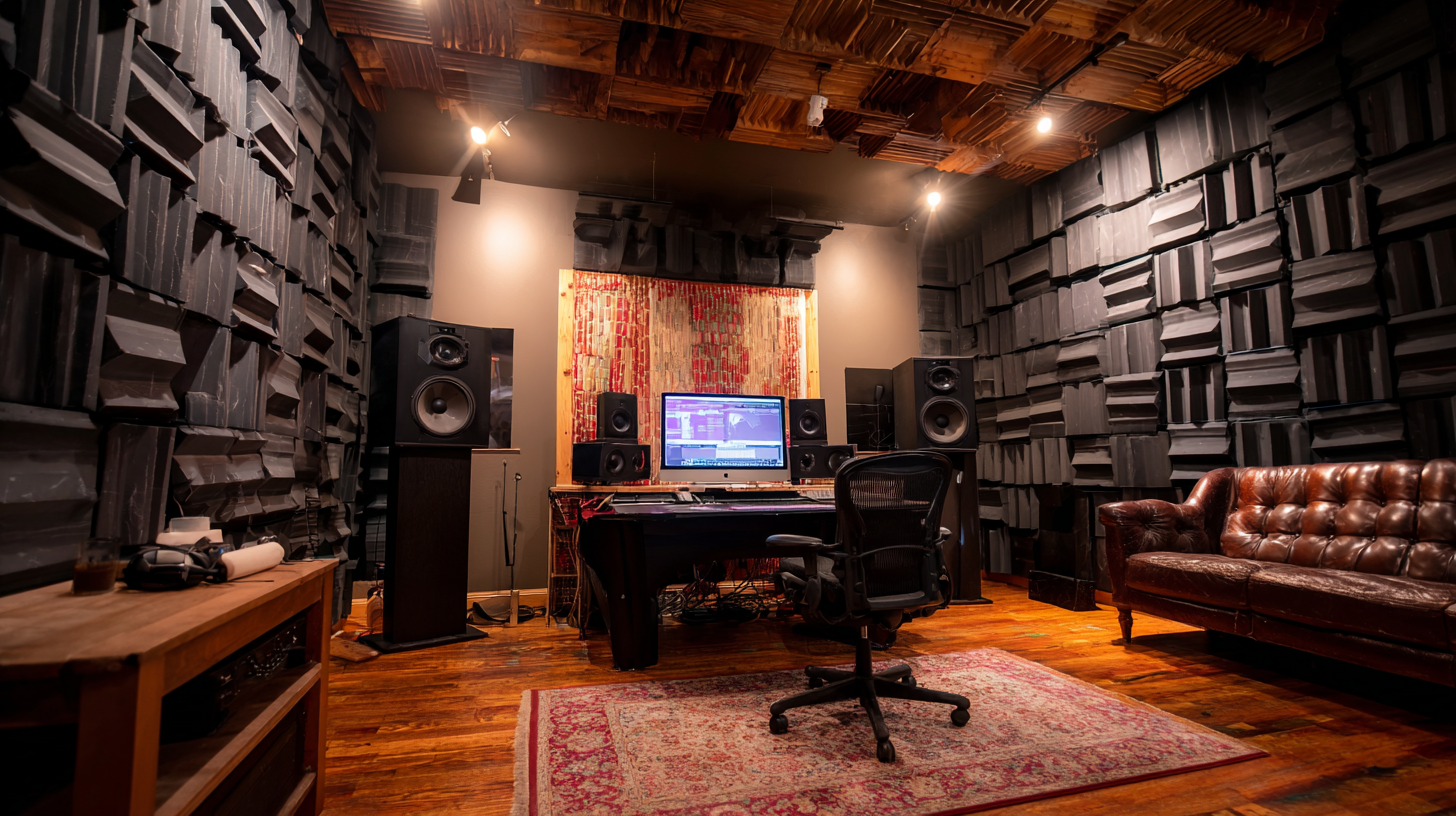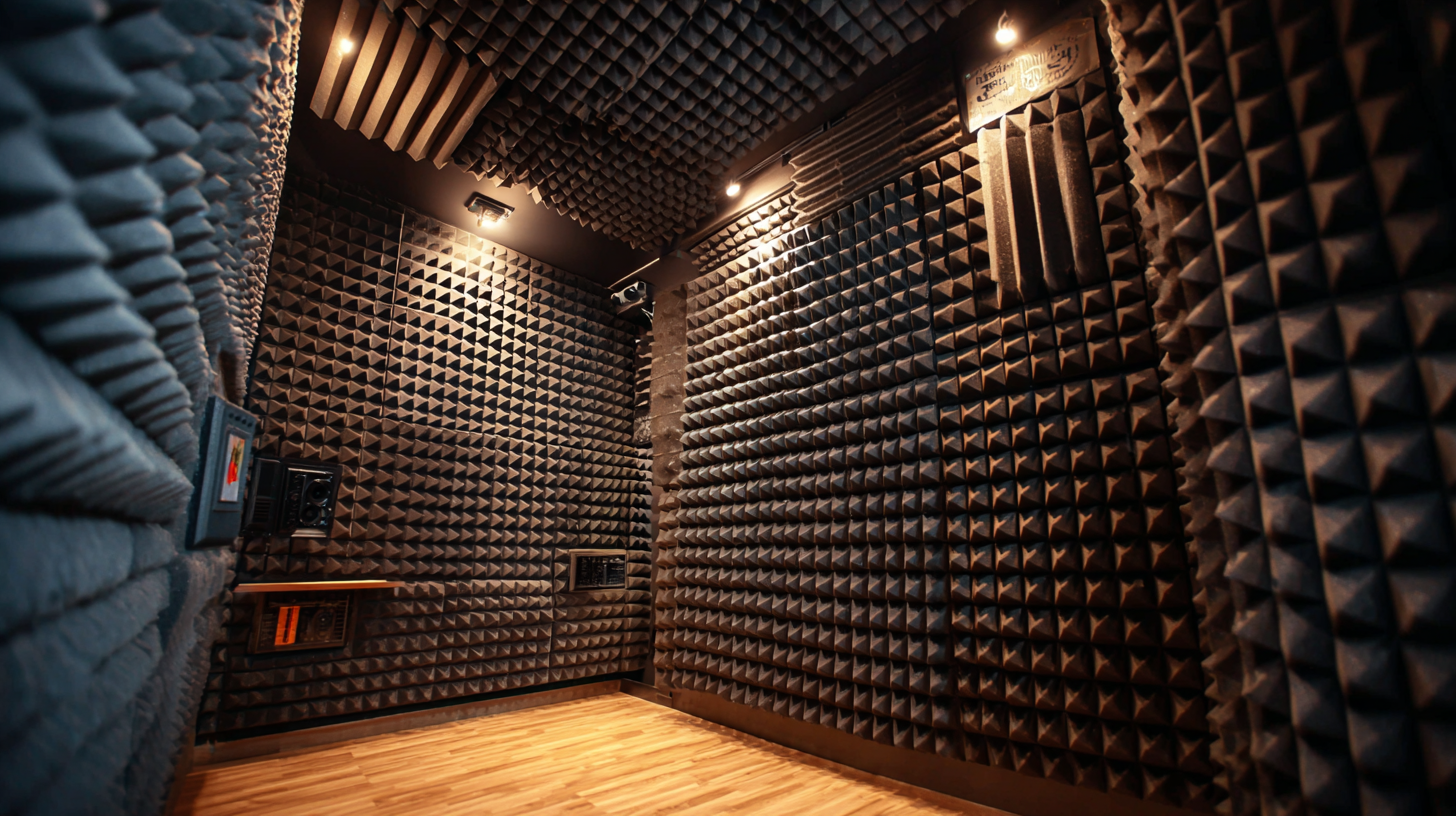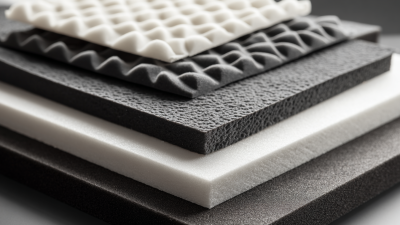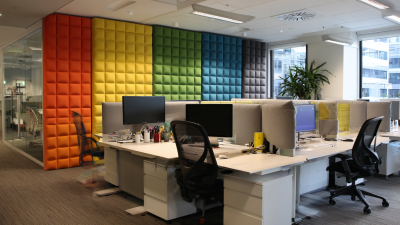How Acoustic Foam Panels Enhance Sound Quality in Home Studios
In recent years, the significance of sound quality in home studios has become increasingly evident, with studies indicating that a well-treated acoustic environment can improve recording and mixing accuracy by up to 50%. One of the most effective solutions for achieving optimal acoustics is the implementation of acoustic foam panels. These panels are designed to absorb sound waves, reduce echo, and minimize background noise, making them essential for musicians, podcasters, and audio engineers seeking to create professional-level sound recordings.

According to a report from the Audio Engineering Society, inadequately treated spaces can lead to frequency imbalances, negatively impacting sound clarity and listener experience. By integrating acoustic foam panels into their setups, users can enhance the overall sonic quality, ensuring that every note and nuance is captured with precision. This article delves into the benefits of acoustic foam panels and offers practical tips for maximizing their effectiveness in home studios.
The Role of Acoustic Foam Panels in Reducing Echo and Reverberation
 Acoustic foam panels play a pivotal role in enhancing sound quality within home studios, particularly by reducing echo and reverberation. When sound waves bounce off hard surfaces such as walls, floors, and ceilings, they create echoes that can muddle audio recordings, making them less clear and professional. Acoustic foam panels are designed to absorb these sound waves, thereby minimizing reflections and preventing distortion. Their unique porous structure allows them to trap sound energy, which contributes to a more controlled and refined acoustic environment.
Acoustic foam panels play a pivotal role in enhancing sound quality within home studios, particularly by reducing echo and reverberation. When sound waves bounce off hard surfaces such as walls, floors, and ceilings, they create echoes that can muddle audio recordings, making them less clear and professional. Acoustic foam panels are designed to absorb these sound waves, thereby minimizing reflections and preventing distortion. Their unique porous structure allows them to trap sound energy, which contributes to a more controlled and refined acoustic environment.
In addition to improving clarity in recordings, the strategic placement of acoustic foam panels can significantly reduce unwanted reverb. In a home studio, excessive reverberation can lead to a confusing mix where individual sounds blend together, losing their distinctiveness. By incorporating acoustic foam, users can achieve a balanced sound that allows vocals, instruments, and other audio elements to stand out. This treatment creates an ideal setting for musicians and producers alike, ensuring that every sound is captured accurately and represented faithfully in the final mix.
How Acoustic Foam Panels Improve Vocal Clarity in Recordings
Acoustic foam panels play a vital role in enhancing vocal clarity in recordings, making them an essential component for home studios. According to a report by the Acoustical Society of America, effective use of acoustic treatment can reduce echo and reverberation by up to 50%. This reduction in unwanted sound reflections allows vocal performances to shine through with heightened clarity, ensuring that every nuance of the artist's expression is captured accurately.
Moreover, the strategic placement of acoustic foam can mitigate frequency buildup and standing waves, which can cloud vocal recordings. Research by the National Institute of Standards and Technology indicates that untreated rooms often exhibit peaks and dips in frequency response that can exceed ±10 dB, leading to muddled sound. By employing acoustic foam panels, recording artists can achieve a flatter frequency response, resulting in crisp and pristine vocal tracks that are more true to the original sound. In an era where high-quality production is paramount, investing in acoustic treatment can elevate the standard of recorded vocals, providing listeners with a compelling audio experience.
Impact of Acoustic Foam Panels on Vocal Clarity in Home Studios
The Impact of Foam Density on Sound Absorption and Quality
Acoustic foam panels play a crucial role in enhancing sound quality within home studios, and one of the key factors influencing their effectiveness is foam density. Higher density foam is known to provide superior sound absorption, making it an ideal choice for spaces where clarity is paramount. Dense foam panels can absorb a wide range of frequencies, particularly mid and high frequencies, which are often problematic in untreated rooms. This results in cleaner recordings and minimizes the echo and reverberation that can muddy sound clarity.
Tip: When selecting acoustic foam, consider medium to high-density options, as these are generally more effective in personal studios. Additionally, mixing different densities can help target specific sound issues, offering a balanced acoustic treatment.
The density of the foam also affects its durability and performance over time. While lower density panels may be cheaper, they tend to compress more quickly, losing their sound-absorbing properties. Investing in denser materials not only improves sound quality but also ensures long-lasting performance. Opting for high-density panels can reduce the frequency of replacements, ultimately saving you money in your studio setup.
Tip: Check the manufacturer's specifications for the foam ratings to ensure you choose panels that will stand the test of time in your home studio environment.
Choosing the Right Placement for Acoustic Foam Panels in Your Studio
When it comes to optimizing sound quality in home studios, the placement of acoustic foam panels plays a crucial role. Properly positioning these panels can significantly reduce unwanted echoes and reverberations, ensuring a cleaner and more professional sound during recording and mixing. Begin by assessing your studio's layout and identifying the primary sound sources, such as speakers or instruments, to determine the best locations for panel installation.
**Tips for Effective Placement:** Start by placing panels at reflection points, typically at the first and second reflection areas where sound bounces off the walls, ceiling, or floor. Use a mirror to help locate these points accurately. Additionally, consider treating corners with bass traps, as low frequencies tend to accumulate in these areas. Experimenting with different configurations will help you fine-tune the setup and achieve the desired acoustic environment.
Incorporating acoustic foam panels strategically can transform your home studio into a space that enhances sound quality. Always remember to balance the sound treatment throughout the room, ensuring that no area is overly dampened or left untreated. This balanced approach will create a more natural listening experience, leading to better outcomes in your audio projects.

Cost-Effective Ways to Enhance Studio Sound with Acoustic Foam
Acoustic foam panels are an effective and cost-efficient solution for enhancing sound quality in home studios. Research from the Acoustical Society of America indicates that untreated rooms can experience decay times of over 1.5 seconds, leading to muddled sound and a less-than-optimal recording environment. By strategically placing acoustic foam panels, it's possible to reduce these decay times significantly, sometimes to under 0.5 seconds, which is ideal for achieving clarity and balance in recordings.
Moreover, the use of acoustic foam can be a budget-friendly investment for aspiring musicians and producers. Studies show that professional acoustic treatments can cost thousands of dollars, whereas quality foam panels can be obtained for as little as $50 per square meter. This affordability empowers home studio owners to optimize their sound environment without breaking the bank. By focusing on high-frequency absorption through these panels, users can create a more controlled acoustic space that allows for better mixing, clearer vocals, and a more professional overall sound.
How Acoustic Foam Panels Enhance Sound Quality in Home Studios
| Acoustic Foam Type | Thickness (inches) | Sound Absorption Coefficient | Ideal Room Size (sq ft) | Estimated Cost (per panel) |
|---|---|---|---|---|
| Classic Wedge | 2 | 0.80 | 100-200 | $20 |
| Pyramid Foam | 3 | 0.85 | 150-250 | $25 |
| Bass Traps | 4 | 1.00 | 200-400 | $30 |
| Corner Foam | 12 | 0.90 | 150-300 | $35 |
| Sound Absorption Panels | 2 | 0.75 | 100-200 | $22 |
Related Posts
-

Unlocking Acoustic Perfection: Why Soundproof Foam is Your Best Investment for Noise Reduction
-

Industrial Curtains Market Growth Projections at China Import and Export Fair 2025 138th Session
-

The Ultimate Guide to Choosing the Best Sound Proof Panels for Your Home
-

10 Proven Ways Acoustic Sound Panels Improve Office Productivity by 30% or More
-

7 Best Sound Absorbing Panels for Ultimate Acoustic Comfort
-

Transform Your Space with Stylish Sound Absorbing Panels: A Comprehensive Guide